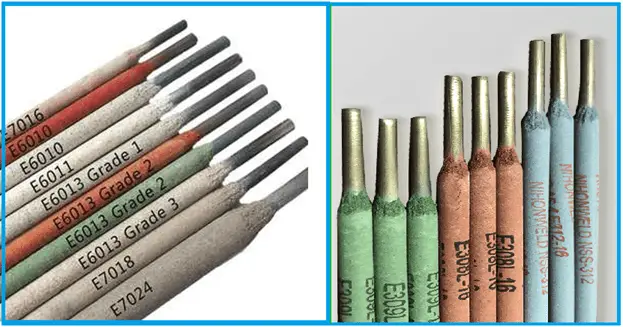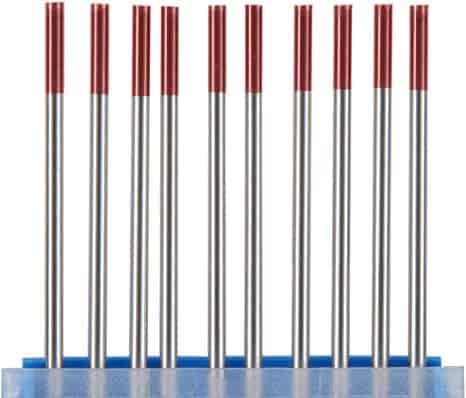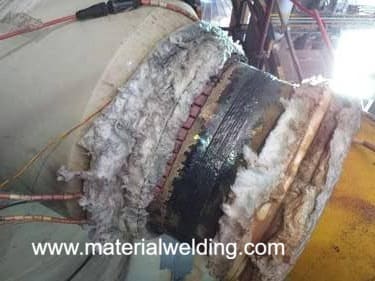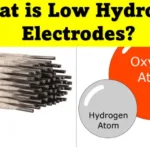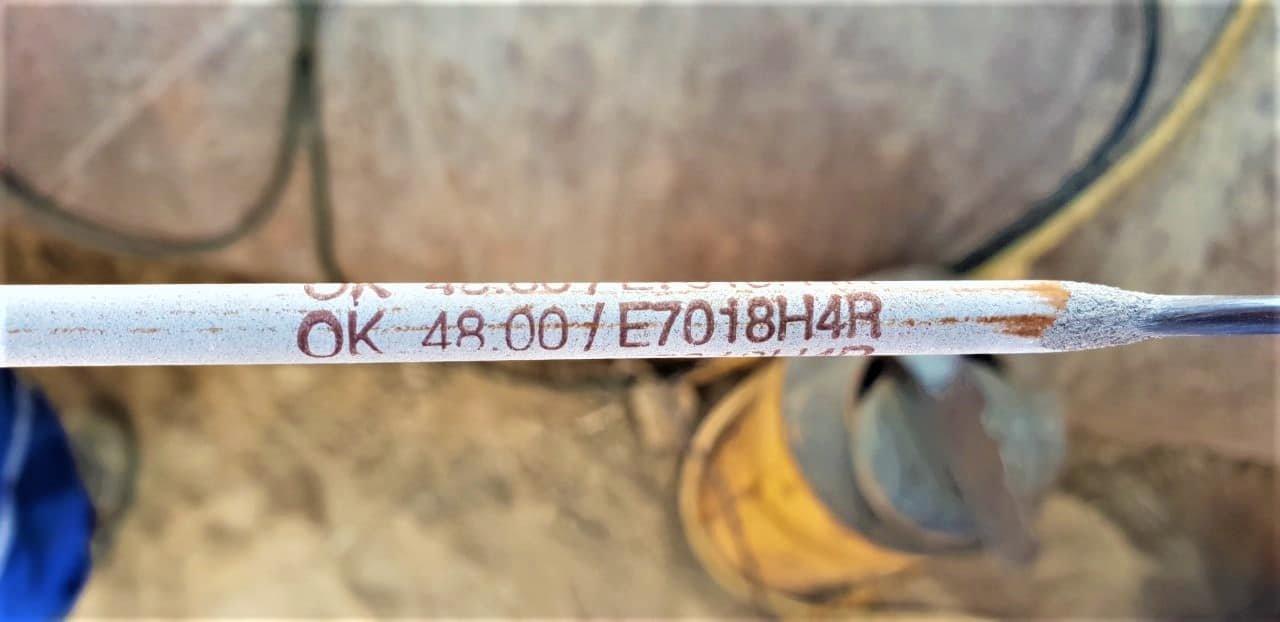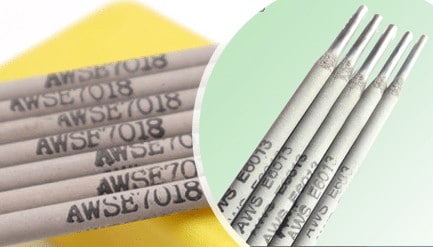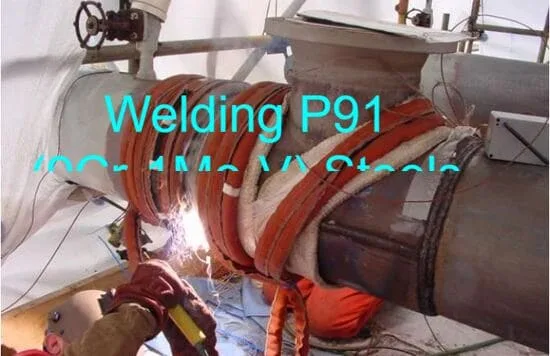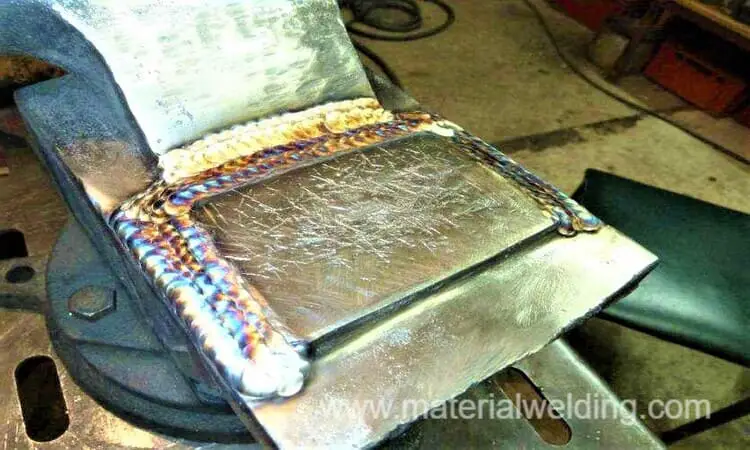P91 Material Welding Rod
When welding P91 material, it is important to use a low hydrogen P91 Welding rod such as an E9018-B9 electrode. This will help to prevent cracking and other weld defects.
The main P91 Material Welding Rods are:
- E9018-B91, AWS A 5.5 (old designation E9018-B9)
- E9016-B91, AWS A 5.5 (old designation E9016-B9)
- E9015-B91, AWS A 5.5 (old designation E9015-B9)
- ER90S-B9, AWS A 5.28
- E90C-B9, AWS A 5.28
- E CrMo91 B 4 2 H5
The above welding electrodes are for use with P91 material welding using Stick Welding (Shielded metal arc welding- SMAW).
Read more: P91 Material Welding Complete Guide.
P91 Material Welding Rod Mechanical Properties
P91 Material Welding Rod Mechanical Properties are provided in the below table. (Reference: AWS A5.5)
| Welding Filler Wire Designation | Tensile Strength | Yield Strength | Elongation | Test Condition |
|---|---|---|---|---|
| E9018-B91 | 90 Ksi (620 MPa) Minimum | 77 Ksi (530 MPa) Minimum | 17 % Minimum | PWHT |
| E9016-B91 | 90 Ksi (620 MPa) Minimum | 60 Ksi (410 MPa) Minimum | 16 % Minimum | PWHT |
| E9015-B91 | 90 Ksi (620 MPa) Minimum | 60 Ksi (410 MPa) Minimum | 16 % Minimum | PWHT |
P91 Material & its Uses
P91 is a chromium-nickel-vanadium alloy steel that finds its applications in elevated temperature environments.
The material is often used in power plant construction, oil and gas refineries, and chemical processing plants.
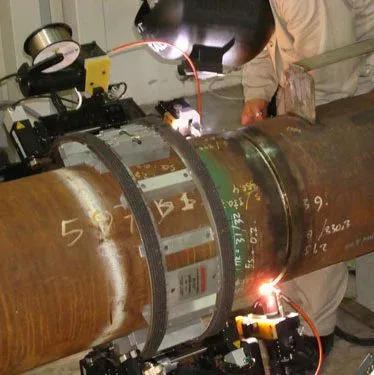
The high creep resistance of P91 makes it ideal for use in boiler tubes, headers, steam lines, and other high-pressure environments.
P91 Welding Filler
P91 Welding Filler wires are classified in AWS A5.28 (Low alloy steel welding filler wire specification).
P91 Welding filler wires are:
- ER90S-B9 (Solid filler wire for P91 welding)
- E90C-B9 (Metal Cored wire for P91 welding)
- F9PZ-EB9-B9 (SAW Flux-wire combination, AWS A5.23)
- E9XT1-B9C (FCAW Wire, AWS A 5.29)
The above welding electrodes are for use with P91 material welding using TIG, MIG and Metal Core Welding applications.
P91 Welding Filler Wire Mechanical Properties
The mechanical properties of P91 welding filler wires are given in the below table. (Reference: AWS A5.28)
| Welding Filler Wire Designation | Tensile Strength | Yield Strength | Elongation | Test Condition |
|---|---|---|---|---|
| ER90S-B9 | 90 Ksi (620 MPa) Minimum | 60 Ksi (410 MPa) Minimum | 16 % Minimum | PWHT |
| E90C-B9 | 90 Ksi (620 MPa) Minimum | 60 Ksi (410 MPa) Minimum | 16 % Minimum | PWHT |
P91 Chrome Pipe Welding
Chrome pipes are used in a wide range of industries because of their resistance to corrosion and high temperature creep resistance.
Welding these pipes is different than welding other types of pipes and requires special techniques.
P91 chrome pipe is a type of high-chromium alloy steel pipe that is frequently used in power plants. It is also known as T/P91, P/91, or F/91.
This alloy has a chromium content ranging from 9 to 11 percent and a carbon content somewhere between 0.15 and 0.25 percent. The exact composition can vary depending on the manufacturer.
Welding P91 chrome pipe is not difficult, but it does require some care and attention to detail. The first step is to prepare the surfaces to be welded by cleaning them thoroughly with a wire brush or grinder.
The most important requirements for P91 chrome pipe welding is the application of the right preheat temperature, interpass temperature control and PWHT temperature.
P91 Chrome Pipe Welding Preheat, Interpass and PWHT Temperature
P91 chrome pipe is a difficult material to weld due to its high Chromium, molybdenum and Vanadium content.
In order to weld it successfully, it is important to follow the proper preheat, interpass and post-weld heat treatment (PWHT) temperatures.
Preheat: The preheat temperature for P91 pipe is between 400-600°F (200-315°C).
Interpass: The interpass temperature is the temperature at which the weld pool solidifies during welding.
For P91 pipe, this temperature should be restricted to maximum of 600°F (315°C). This ensures that the microstructure of the weld metal will be fine and uniform.
Post weld Heat Treatment (PWHT): The postweld heat treatment temperature for P91 Chrome Pipe welding shall be 1400 ± 25°F (760 ± 15°C) with a minimum of 2 hours soaking period. (Reference AWS A5.5).
Read more:
